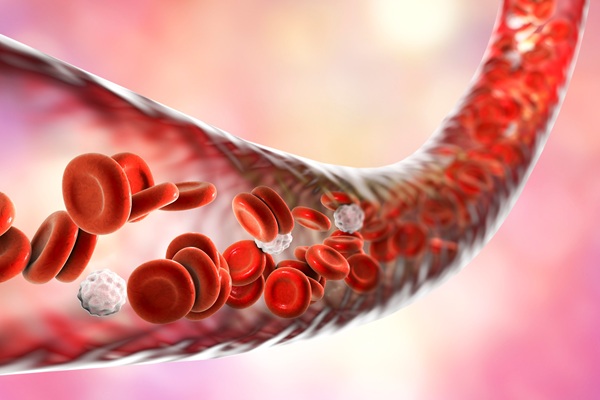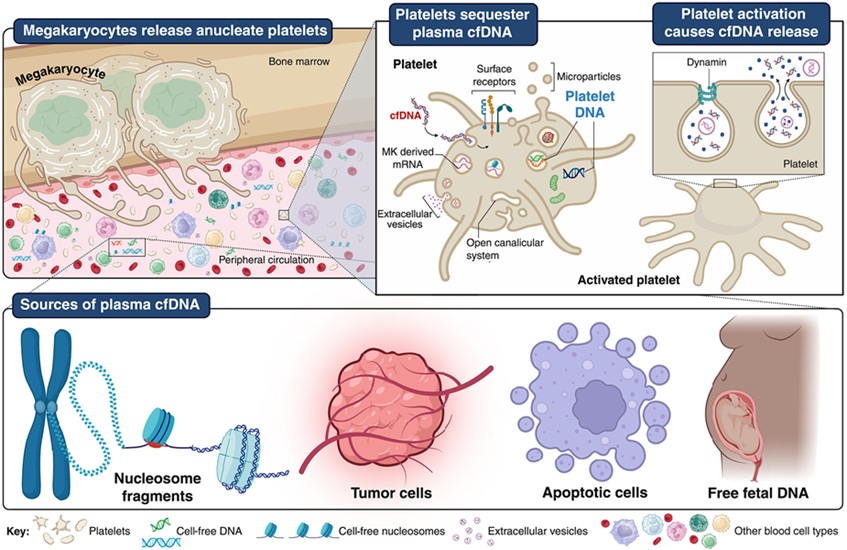Liquid Biopsy Approach Inspired by Swarm Behavior
By LabMedica International staff writers
Posted on 21 Aug 2017
Researchers have designed an algorithm for blood sample analysis where, rather than testing for evidence of cancer DNA or protein biomarkers, they test for tumor cell RNA absorbed by circulating platelets – i.e. thrombocytes. In a new study, they designed the test to diagnose non-small cell lung cancers (NSCLCs), which make up the majority of lung cancer cases, and achieved ~90% accuracy on a validation control group.Posted on 21 Aug 2017
They named the new test thromboSeq. "Ultimately, the aim of liquid biopsy-based cancer detection is to detect all cancers at once in an early-stage – an all-in-one test," said first author Myron Best, cancer researcher at VU University Medical Center (Amsterdam, Netherlands), "ThromboSeq might not only provide lung cancer diagnostics, but potentially any other tumor type as well, and may enable tumor-type stratification."
Platelets, the short-lived blood cells that form blood clots in response to injury, also respond to cancer and a range of inflammatory events. Because platelets don't have a nucleus, all RNA found in them comes from megakaryocytes (the cells that form platelets in bone marrow) or from RNA they absorbed while circulating in blood. Platelets in a cancer-free person will contain a different compilation of RNA than platelets that interacted with a tumor, called tumor-educated platelets.
The researchers studied blood samples of more than 700 people, including people diagnosed with late-stage and some with early-stage NSCLC. The control group of people with no known cancer included patients with other diseases (such as multiple sclerosis, chronic pancreatitis, and coronary artery disease) to insure the algorithm was screening for cancer-specific RNA, and not for RNA that platelets generally encounter in inflammation or disease.
As it ran, the thromboSeq algorithm scanned the approximately 5,000 different RNA molecules found in the platelets, continuously optimizing its panel of RNA, arriving at the few RNAs from genes that indicate a cancerous tumor. Then, the researchers ran screening tests of the blood samples to see how accurately they could diagnose cancer.
The analysis was inspired by swarming behavior in nature. Birds, insects, and fish all swarm to optimize their numbers for a purpose--either in defense against predators or to search for food. "Birds continuously adjust their location in the swarm relative to each other, thereby increasing the flock's coverage and, thus, the efficiency of the food-searching process," said Dr. Best, "We applied this natural phenomenon to our algorithms, which make use of the complex RNA repertoire present in platelets."
In the study, thromboSeq diagnosed early-stage cancer with 81% accuracy and late-stage cancer with 88% accuracy. In a validation control group matched for age, smoking status, and blood storage time, the algorithm yielded an accuracy up to 91%.
"Although the tumor-educated platelets blood test does not, so far, provide perfect predictions, it may complement alternative liquid biopsy bio-sources such as cell-free DNA, extracellular vesicles, circulating proteins, and circulating tumor cells as well as imaging modalities such as CT scans," said Dr. Best, adding that the technology is likely robust enough to begin clinical trials.
The researchers plan to further optimize their algorithm with more samples and tests in people who are suspected to have lung cancer but are not yet diagnosed. "We also aim to further understand the biological mechanism responsible for platelet education in the presence of cancer," he said.
The study, by Best M et al, was published August 14, 2017, in the journal Cancer Cell.
Related Links:
VU University Medical Center













